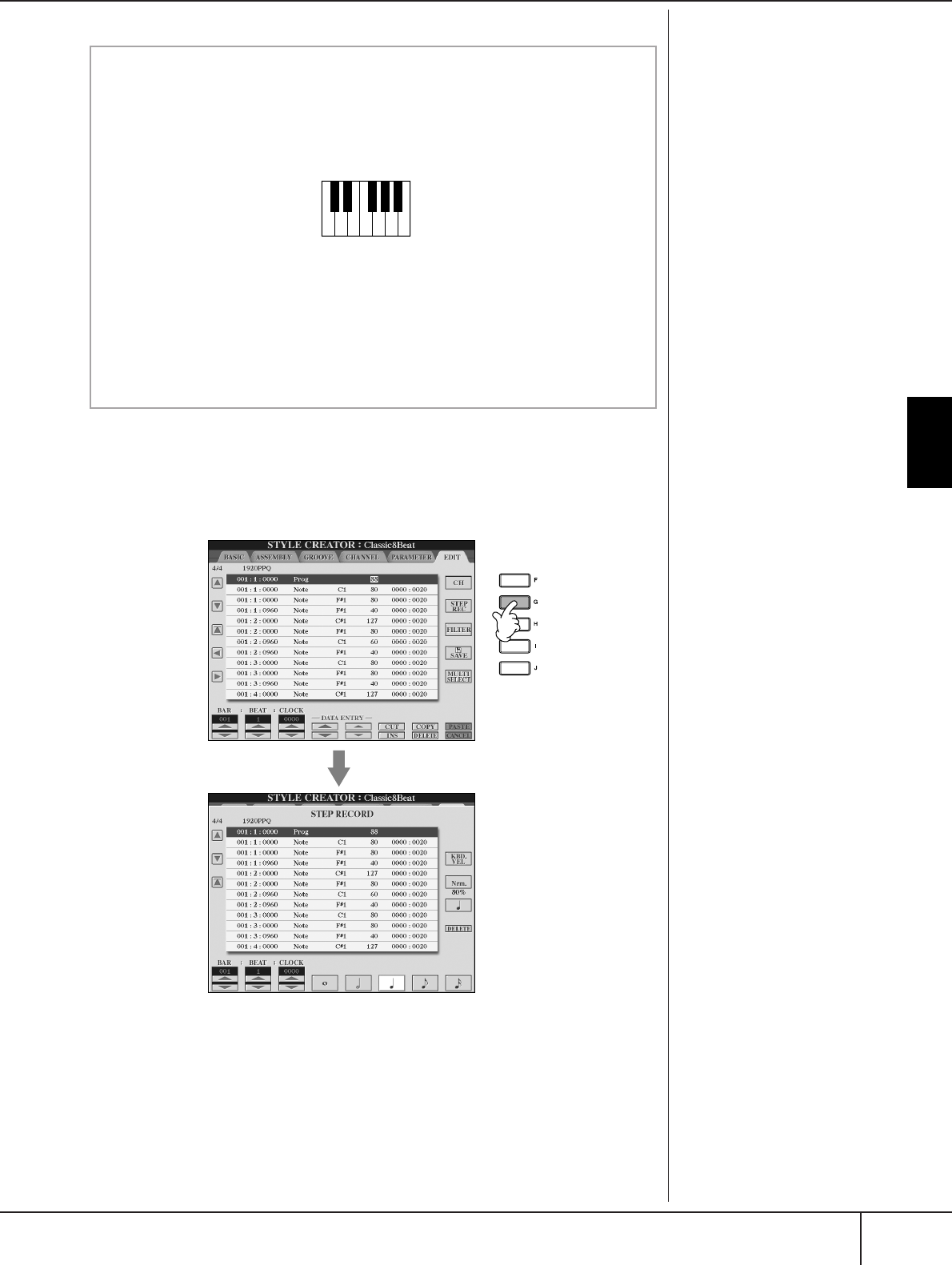
Style Creator
CGP-1000 Owner’s Manual
121
Using, Creating and Editing the Auto Accompaniment Styles
Step Recording (EDIT)
The explanation here applies when selecting the EDIT tab in step 4 of “Realtime
Recording” (page 119).
In the EDIT display, you can record notes with absolutely precise timing. This Step
Recording procedure is essentially the same as that for Song Recording (page 147),
with the exception of the points listed below:
• In the Song Creator, the End Mark position can be changed freely; in the Style
Creator, it cannot be changed. This is because the length of the Style is automati-
cally fixed, depending on the selected section. For example, if you create a Style
based on a section of four measures length, the End Mark position is automati-
cally set to the end of the fourth measure, and cannot be changed in the Step
Recording display.
Any desired chord or chord pro-
gression can be used for the
INTRO and ENDING sections.
Changing the Source Chord
If you want to record the pattern
with a Source Chord other than
CM7, set the PLAY ROOT and
PLAY CHORD parameters on the
PARAMETER page (page 127)
before recording.
Rules when recording non-rhythm channels
• Use only the CM7 scale tones when recording the BASS and PHRASE
channels (i.e., C, D, E, G, A, and B).
• Use only the chord tones when recording the CHORD and PAD chan-
nels (i.e., C, E, G, and B).
Using the data recorded here, the auto accompaniment (Style playback) is appro-
priately converted depending on the chord changes you make during your per-
formance. The chord which forms the basis for this note conversion is called the
Source Chord, and is set by default to CM7 (as in the example illustration above).
You can change the Source Chord (its root and type) from the PARAMETER dis-
play on page 127. Keep in mind that when you change the Source Chord from
the default CM7 to another chord, the chord notes and recommended notes will
also change. For details on chord notes and recommended notes, see page 128.
CRC CRC
C = Chord notes
C, R = Recommended notes


















